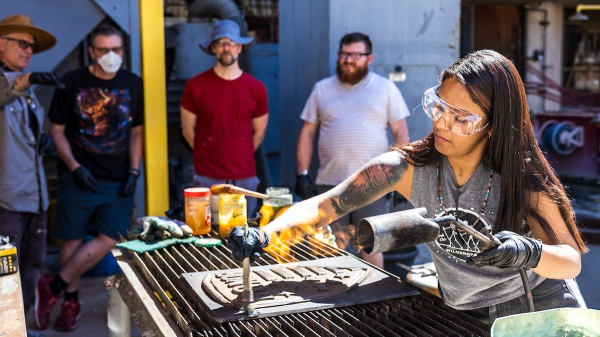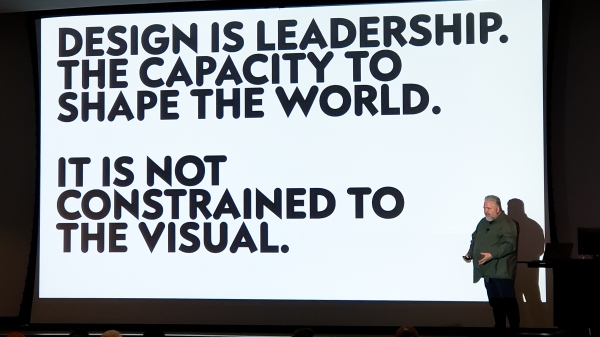Mary Lou Fulton Teachers College online graduate programs ranked No. 13 in US
Learn more about the MLFTC programs from the people who make them great
Arizona State University’s Mary Lou Fulton Teachers College has jumped from No. 36 to No. 13 in U.S. News & World Report’s ranking of online graduate education programs.
The Teachers College offers eight online graduate degree programs and five online graduate certificate programs. Degree programs include Leadership and Innovation (EdD), Curriculum and Instruction: Early Childhood (MEd) and Educational Technology (MEd). Certificate programs include Advanced Analytics in Higher Education, Applied Behavior Analysis and English as a Second Language.
Related: ASU Online undergraduate degrees ranked No. 2 in the nation
Often, online degree programs get a bad rap. Meredith Toth, assistant dean of digital learning, notes that, not long ago, when people heard “online learning” they immediately thought of a model in which students log on to a computer, do some reading and complete an assignment from home. She says earning a degree online has come a long way since then.
“Online learning at Mary Lou Fulton Teachers College is as varied as traditional classroom learning,” Toth said. “It’s often even more interactive as students regularly engage with the material, with one another and with instructors — individually or in teams — as part of the learning process.”
Of course, there is a method to the madness. Toth says one of the keys to making online education successful is collaboration between the instructional designers and faculty to design activities for an online model. “We can’t simply replicate an in-person activity or lesson. We must redesign it.”
Dean Carole Basile said, “It’s always gratifying to be recognized for what we think we do well. Our faculty and staff put a lot of effort and thought into designing an outstanding educational experience for our online students. The way we go about it — asking the right questions about learner experience, prototyping and then scaling solutions — is the way our college approaches most challenges in education. That includes higher-ed and P–12 education. The excellence of our online graduate education programs is a reflection of our core commitment to deliver better-personalized learning.”
More, from those who know the MLFTC online graduate programs best — faculty, staff and alumni.
Craig Mertler (associate professor): "In the EdD Program in Leadership and Innovation, the content and faculty are identical for the online and face-to-face versions. We like to say that we have one program that is delivered using two modalities. I believe it’s critical to maintain consistency across the two delivery modes of any graduate program."
Leanna Archambault (associate professor): “When we made the decision to take the master’s program in educational technology online, we applied design principles and crafted the program courses to consider what students needed to know and be able to do, how they would be assessed and the learning activities that would get them there. Due to the redesign, it’s a more inclusive master’s program that focuses on learning design leveraging the affordances of technology.”
Samuel DiGangi (associate professor): “An effective instructor in an online environment needs to have not only competence with and confidence in the use of technology, but must also be skilled in approaches to effectively communicate with and support students at a distance. In our program, we specialize in the study of behavior, and specifically on examining and adjusting the environment to best meet the needs of our students.”
Mertler: “I try to incorporate as much live, synchronous one-on-one or small group time as possible. We do this using video conferencing software like Zoom. Many faculty members hold real-time, virtual office hours, where students can pop in and ask questions or get feedback.”
Archambault: “One of the most important elements to online programs is building a supportive learning community and getting to know students. I like to use screencasting to create videos where I introduce topics, clarify concepts and guide students through activities. I often include stories or anecdotes in these to bridge the online gap. Students get to know me and see that there is a human on the other side of the screen who cares.”
Adrienne Wooten (instructional designer, digital learning): “We work closely with faculty to vet new techniques and tools to increase student engagement. Rather than just providing a video lecture, we create interactive video lessons with tools, such as PlayPosit, where students answer questions as they watch the video. We also create opportunities for students to collaborate with other students via video conferencing software.”
Babette Kraft (instructional designer, digital learning): “The nature of the EdTech program is to train future instructional designers, online teachers and education technologists. We are very lucky to have faculty who can directly apply their expertise in online learning as instructors and designers. We engage students by actively demonstrating the theories, techniques and tools so students get the chance to actually experience what they’re learning about in our program, which is transferable to their current or future work.”
Karen Bossen (instructional designer, senior): “Engagement can take many forms. For example, rather than only posting an instructor photo and course bio, we encourage instructors to create and post instructional videos and course announcements. This way, students feel more connected to the instructor and course content, and freer to engage with questions and comments. We also ask students to create videos for assignments and discussions so they can learn to articulate understanding and engage with their instructors and peers.”
Brian Hall (academic success specialist, online graduate services): “Our online graduate programs have done an amazing job of providing a solid team of people for students to feel fully supported. The team members truly work as a team and not only ensure coverage for their area of expertise, but communicate with each other to avoid lapses in support.”
Wooten: “Although many of the courses have high enrollment, we maintain small communities of learners, led by co-instructors who are certified professionals in the field. This allows students to receive prompt feedback and answers to questions.”
Bossen: “Our small classroom model creates learning environments that students can thrive in and instructors can manage well and provides access to large numbers of students in any one course. This model has proven to be very sustainable.”
Archambault: “I think online classes have to apply a significant amount of design upfront. Although you can make adjustments, this is often easier in a face-to-face course. If you see quizzical looks, you know as the instructor, ‘Oh, I need to go back and explain that differently.’ So in crafting an online course and all of its components, I have to structure things carefully and apply an instructional design process to make sure that elements are carefully structured, build on one another and include learning checks so that I can go back if necessary. It’s a more deliberate process, which I enjoy because there is a creative aspect to it as well.”
Melissa Geiselhofer (associate clinical professor): “Prior to serving as online faculty for the MEd program, I spent over a decade as faculty in a face-to-face teacher prep program. I have experienced far more changes in the past three years of online instruction than in the past 25 years I’ve been in the field of education. A few years ago, my online student teachers mailed me CDs of their recorded teaching lessons. Today, they compress and upload their lessons where I embed comments directly in the video for concise and prescriptive feedback followed by an immediate post-conference. This morning, I ‘chatted’ with a student in Nigeria while viewing a video showcase of her action research project.”
Shawn Loescher (EdD ’18): “I chose the EdD in Leadership and Innovation program because the online format allowed me to have access to the full benefits of a world-renowned university, while giving me the freedom I needed as a working professional and father of four to travel, work and participate in my children’s lives.”
Sunshine Ortiz (MEd ’18): “I chose the MEd for early childhood because I’m currently in the field and I’m a full-time working mother, grandmother and the caregiver to my husband who is a retired combat vet. I need the flexibility.”
Liliana Grijalva (MEd ’18): “I chose online learning due to being a teacher, wife and mother. Completing the courses online allowed me to choose my learning schedule and provided me with the flexibility to learn but still accommodate my life. Not only that, but I was able to learn from a diverse group of people from around the world with a variety of experiences and knowledge.”
Emily Petty (MEd ’18): “I chose the online program because of its flexibility. I continued to work full time as a teacher as I pursued my education at night and on weekends. The deadlines for submitting work in the online program were clear and worked well with my schedule.”
Loescher: “The EdD in Leadership and Innovation program provided multiple means and modalities for instructors and students to communicate with one another. Faculty use chat rooms, graphic organizers, tutorials, online postings, blogs, topic videos, video lectures, video conferencing and other strategies that fall outside of the scope of just meeting in a regular classroom structure. And while it wasn’t a requirement, many of us met in person.”
Grijalva: “Communicating with the instructor and peers online was easy and convenient. Everything that was accessible in the regular classroom was easily accessible in the online platform. Just like asking for a classmate's email or phone number, the same was easily done online. With the different assignments that required communicating with others, a sense of community was created by the weekly posts and responses to the different group projects.”
Petty: “The professors reached out weekly to see how things were progressing and offered support. I was also able to email professors with questions or when I needed clarification and they would respond quickly via email. I even had one professor give me her phone number so we could talk over an assignment on the phone.”
More Arts, humanities and education

'Devils in the Metal': ASU vet leads iron cast workshop for former service members
Bruce Ward believes everyone has a symbol of strength or resilience, and they have an obligation to find it. His happens to…

ASU English professor wins Guggenheim Fellowship for poetry
The awards — and opportunities — keep piling up for Safiya Sinclair, an associate professor in Arizona State University’s…

Designer behind ASU’s brand named newest Herberger Institute Professor
Bruce Mau, co-founder and CEO of the Chicago-based holistic design consultancy Massive Change Network, has joined Arizona State…